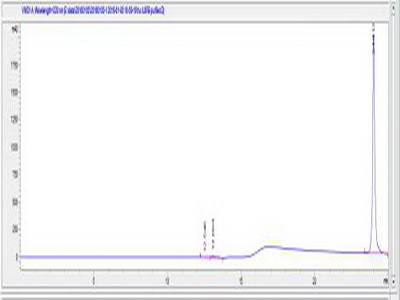OVA Conjugated Interleukin 8 Receptor Beta (IL8Rb) 

CD182; CDw128b; IL8R-B; IL8-RB; CMKAR2; CXCR2; IL8R2; C-X-C chemokine receptor type 2; GRO/MGSA receptor; High affinity interleukin-8 receptor B
Overview
Properties
- Product No.CPC006Hu21
- Organism SpeciesHomo sapiens (Human) Same name, Different species.
-
Applications
Immunogen; SDS-PAGE; WB.
If bio-activity of the protein is needed, please check active protein.
Research use only - DownloadInstruction Manual
- CategorySignal transductionTumor immunityInfection immunityDermatology
- SourceProtein Conjugation
- Original Molecular Massn/a
- Buffer FormulationPBS, pH7.4.
- Traits Freeze-dried powder, Purity > 90%
- Isoelectric Pointn/a
Share your citation
Upload your experimental result
Review
Leave a message
Loading...
Sign into your account
Share a new citation as an author
Upload your experimental result
Review
Please attach serial No. on instruction manual


Contact us
Please fill in the blank.
Name*
Organization
Address
E-mail address*
Telephone
Inquiry*
Verification code*

Formula

Usage
Reconstitute in PBS (pH7.4) to a concentration of 0.1-1.0 mg/mL. Do not vortex.
Storage
Avoid repeated freeze/thaw cycles. Store at 2-8°C for one month. Aliquot and store at -80°C for 12 months.
Stability
The thermal stability is described by the loss rate. The loss rate was determined by accelerated thermal degradation test, that is, incubate the protein at 37°C for 48h, and no obvious degradation and precipitation were observed. The loss rate is less than 5% within the expiration date under appropriate storage condition.
Increment services
Citations
- Direct Macromolecular Drug Delivery to Cerebral Ischemia Area using Neutrophil-Mediated Nanoparticles.pubmed:28900508
- Role of ceramide synthase 2 in G-CSF signaling and G-CSF-R translocation into detergent-resistant membranesPubmed: 30679689
- Pathogenic Functions of Tumor Necrosis Factor Receptor-associated Factor 6 Signaling following Traumatic Brain Injury
- The neuroprotection of hyperbaric oxygen therapy against traumatic brain injury via NF-¦ÊB/MAPKs-CXCL1 signaling pathway
















